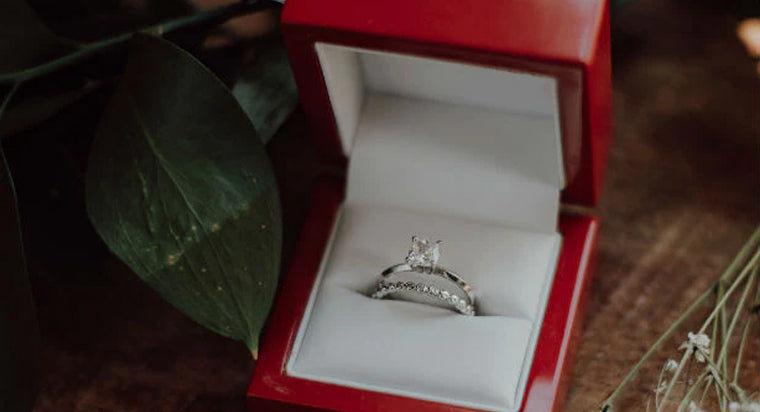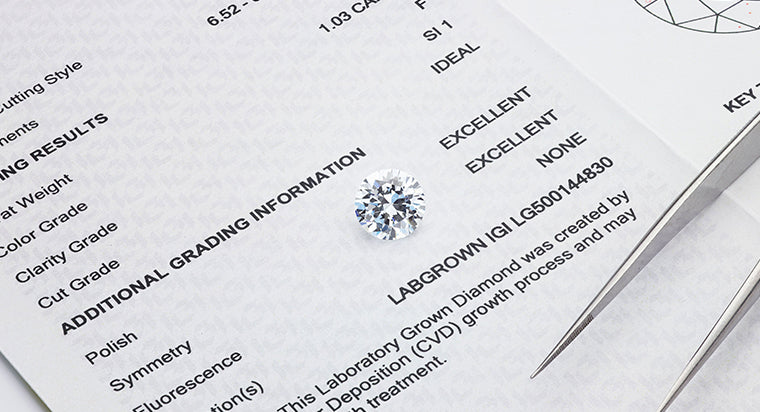Everything You Need to Know About a Diamond Culet
The diamond's culet is the bottom most part of the diamond typically where the pavilion comes to a close. The culet is pointed and the pavilion angles meet to prevent light from falling through or leaking from the bottom of the diamond. All diamonds have a culet, although the size of the culet may vary. The most common culet size is None, as per GIA grading. Because culets are pointed and small in surface area, they may be susceptible to breakage. That is why when a diamond is set in jewelry, it is done so in a way that protects and hides the culet. The culet grade is found on a GIA grading report and contributes to the diamond's cut grade. A diamond must generally have a None to Very Small culet grade to receive an Excellent cut grade.
TABLE OF CONTENTS
Culet Scale

Even the pointed end of a diamond is measured and graded on a scale. The culet is graded by evaluating the point where the diamond closes under the pavilion under 10x magnification. The culet's grade is the size and presence of the opening under the pavilion. Culet is an important factor in a diamond's light performance and light leakage; therefore, it affects the diamond's cut grade.
None: There is no opening under the pavilion so light cannot leak from the culet and is reflected back. This is a requirement for excellent cut grade diamonds.
Very Small: The culet has a tiny open not visible without magnification. Light leakage is minimal and not enough to impact the diamond's sparkle and light performance.
Small: The culet has a visible opening under magnification that leaks a small amount of light. The diamond will still have high brilliance and sparkle.
Medium: A noticeable opening is visible under magnification and small without it. The diamond will lose light performance as light escapes through the pavilion's center.
Large: The culet is noticeable open and acts like a facet. Light leakage occurs and brilliance is affected. Typically, Old European and Old Mine cut diamonds have large, open culets.
Very Large: A large opening is obvious and present in the diamond. You'll never see this in a brilliance cut or modern cut diamond. Old Mine and Old European cut diamonds may have very large culets.
How is Culet Grade Determined
GIA laboratory graders look at a diamond face-up and through 10x magnification. This means that they are looking at the diamond through the table facet. They then assign a grade to the culet based on it's appearance in relation to the rest of the diamond facets. If the diamond does not have a culet facet, the size is listed as none. Additionally, if the culet is at a greater angle to the table facet, misaligned, it is listed as a an extra fact on the diamond. This factor can be observed by looking at the diamond at an angle. If there is a clarity imperfection in the culet such as an indented natural, chip or cavity, only the remaining portion of the culet is used to assign a grade. Graders use magnification, and photographic references to ensure that the culet grade is accurate.
Culet's Effect on a Diamond
Culet is the point at which the pavilion closes under the diamond. Culet plays a significant role in light performance because it can be viewed directly through the center of the diamond and impacts the diamond's light reflection. Larger, open culets leak light from the pavilion whereas closed or none graded culets reflect light as required. Today, modern fancy shapes and brilliant cut diamonds tend to have closed or none culets. With greater technology and cutting precision, diamond manufacturer’s understand the requirements to close the diamond’s culet. Culet is often neglected because it is require to find open culet diamonds. These are most typically found in Old European and Old Miner cut diamonds, with antique look and more traditional diamond cuts.
Because a culet is pointed and closed, it is sharp and can be broken from high or hard impact. The culet is the most vulnerable part of a diamond, commonly susceptible to breaking. When set in jewelry, it is protected and unlikely to be harmed. A chipped culet is noticeable because it is located directly below the diamond's table.
FAQs
What is a diamond culet?
Should a diamond have a culet?
Is a pointed culet good?
How is culet grade determined?







